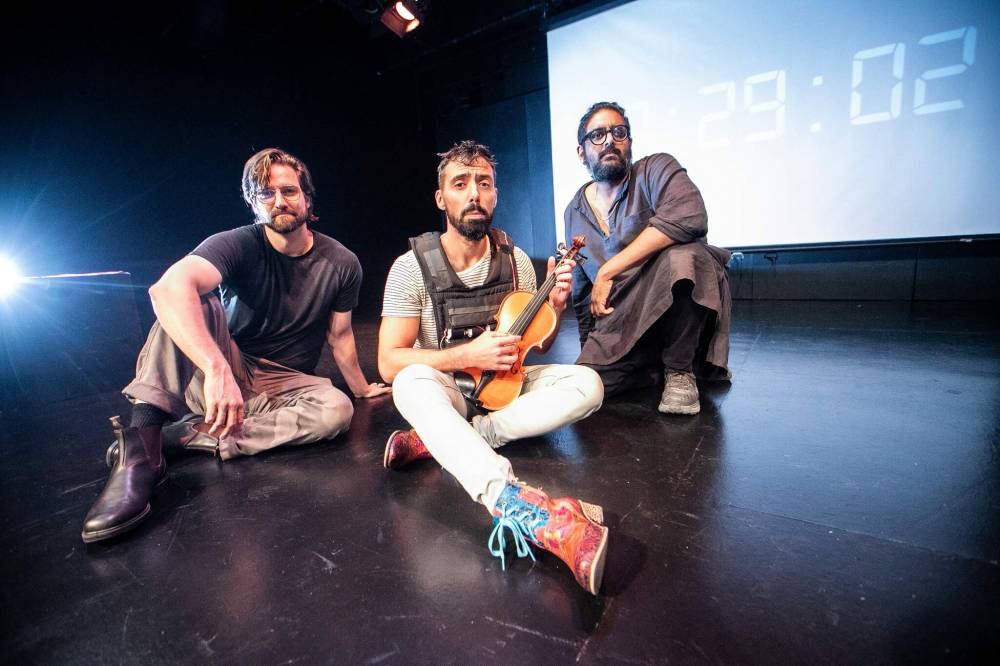Play serves as prism for different politics, histories
Advertisement
Read this article for free:
or
Already have an account? Log in here »
To continue reading, please subscribe:
Monthly Digital Subscription
$1 per week for 24 weeks*
- Enjoy unlimited reading on winnipegfreepress.com
- Read the E-Edition, our digital replica newspaper
- Access News Break, our award-winning app
- Play interactive puzzles
*Billed as $4.00 plus GST every four weeks. After 24 weeks, price increases to the regular rate of $19.00 plus GST every four weeks. Offer available to new and qualified returning subscribers only. Cancel any time.
Monthly Digital Subscription
$4.75/week*
- Enjoy unlimited reading on winnipegfreepress.com
- Read the E-Edition, our digital replica newspaper
- Access News Break, our award-winning app
- Play interactive puzzles
*Billed as $19 plus GST every four weeks. Cancel any time.
To continue reading, please subscribe:
Add Free Press access to your Brandon Sun subscription for only an additional
$1 for the first 4 weeks*
*Your next subscription payment will increase by $1.00 and you will be charged $16.99 plus GST for four weeks. After four weeks, your payment will increase to $23.99 plus GST every four weeks.
Read unlimited articles for free today:
or
Already have an account? Log in here »
If you can’t make it to opening night for the latest production from Theatre Projects Manitoba, don’t fret: there are five premières for The Only Good Indian, with each solo performance vastly different from the next.
Developed in 2017 by Jivesh Parasram and Tom Arthur Davis, OGI invites theatre artists to individually interpret their own politics, cultural backgrounds and personal colonial histories as the clock ticks away on an explosive vest.
“There’s a suicide bomber on stage, and there’s a time limit, everything’s going to blow up and we’re all going to die,” says Parasram, who with Davis runs the action-based theatre collective Pandemic Theatre, founded in 2010.

MIKAELA MACKENZIE / FREE PRESS
Only Good Indian creators Tom Arthur Davis (left) and Jivesh Parasram (right) and performer Eric Plamondon (centre) at the PTE on Tuesday.
While much of the material consists of scripted political lectures that have been delivered during prior runs in Vancouver, Victoria and Toronto, each artist — Parasram and Davis, along with Winnipeg’s Debbie Paterson, Eric Plamondon and Hazel Venzon — responds creatively to a set of prompts to consider the bomber’s mindset, filling in the blanks to provoke reflection and audience introspection: What pressures might drive such desperate action? How severe must a situation be for one to consider such a seemingly irrational decision?
The company describes the experimental production as “part lecture, part meditation and part threat. Or maybe a sacrifice.”
“At the time we created the show, with world events as they were, it felt like absurdity was the only way (to understand), and right now, still, it kind of feels like absurdity is the only way,” says Parasram, a Governor General’s Award finalist in 2021 for his solo show Take d Milk, Nah?
By engaging different local artists to interpret the show’s source material, Davis says, each performance reveals fresh truths and experiences. Métis artist Plamondon is the first Indigenous performer to engage with the piece, originally developed for settler artists, which meant he was given licence to re-invent the project.
“We get very different perspectives and very different interpretations each time,” says Davis, who met Parasram while studying theatre at the University of Toronto.
Even the material that remains consistent among all performers is marked by separate inflections and approaches to recitation, let alone the identities of those bringing the words to the stage. “The lectures really do mean different things depending on who’s saying them.”
The style of performance also deconstructs the concept of an “identity play,” the creators say. The performers might incorporate their own histories into their versions, but they’re still playing fictionalized characters. Parasram’s onstage persona — an ideologically confused young man who’s skeptical about therapy and medical intervention — and Davis’s, a man with white nationalist sympathies, were both developed in their mid-20s, with each character profile probing audience expectation, type and stereotype.
Each performance is split into two parts, the performance proper and a long-table conversation with audience members. Anyone can approach or leave the table, which has a set number of seats, at any point in the participatory talk-back session.
“We want to be able to discuss the work with the audience,” says Davis. “One of the main drivers for us as a company is to create discourse. I know that’s a bit of a cliché at this point, but I think discourse is different than argumentation and people yelling or getting mad at each other online.
“I think the long table is actually a part of the performance itself,” Davis adds.
During previous runs, the creators say, the table portion has been tense, comedic and, more often than not, revelatory.
“A dinner party is the best way to think about it,” says Parasram.
ben.waldman@freepress.mb.ca

Ben Waldman covers a little bit of everything for the Free Press.
Our newsroom depends on a growing audience of readers to power our journalism. If you are not a paid reader, please consider becoming a subscriber.
Our newsroom depends on its audience of readers to power our journalism. Thank you for your support.


